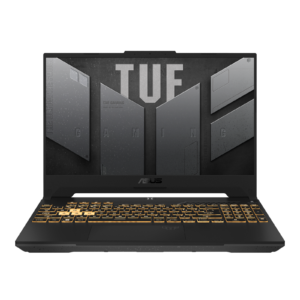What is Best for Blender? A Comprehensive Guide to Choosing the Right Hardware. In the world of 3D graphics and animation, Blender stands as a powerhouse software, enabling artists, designers, and creators to bring their visions to life. However, harnessing Blender’s capabilities requires the right hardware. Whether you’re a professional seeking a dedicated workstation, an enthusiast exploring the capabilities of your laptop, or someone intrigued by the potential of cloud-based solutions, this guide will navigate you through the optimal choices and requirements for using Blender effectively.

Laptop for Using Blender
Laptops have become increasingly powerful, making them a viable option for running Blender. However, not all laptops are created equal when it comes to handling resource-intensive tasks. For a smooth Blender experience, consider the following specs:
- CPU (Processor): Aim for a multi-core processor, such as an Intel Core i7 or AMD Ryzen 7, to ensure efficient rendering and real-time performance.
- GPU (Graphics Card): A dedicated graphics card is crucial. NVIDIA’s GeForce RTX series or AMD Radeon RX GPUs provide the necessary CUDA cores or compute units for rendering and viewport acceleration.
- RAM: Opt for a minimum of 16GB RAM, with 32GB or more for complex scenes and simulations.
- Storage: SSDs offer faster loading times and smoother operation. Aim for at least 512GB of SSD storage.
- Screen: A high-quality display with good color accuracy and resolution helps in accurate visual representation.
- Portability: If you’re on the go, consider a lightweight laptop that doesn’t compromise performance.

Cloud Workstation for Using Blender: A Game-Changer
Cloud workstations have emerged as a revolutionary solution for resource-intensive tasks like 3D rendering. They enable users to access powerful hardware remotely, bypassing the limitations of local hardware. By harnessing the power of cloud computing, you can run Blender seamlessly without worrying about your device’s specs.
Why Using a Cloud Workstation is a Game-Changer:
- Scalability: Cloud workstations can be scaled up or down based on your needs. This flexibility is especially beneficial when working on large projects or tight deadlines.
- Hardware Agnostic: You’re not constrained by your laptop’s hardware. You can access a wide range of GPUs and CPUs, ensuring optimal performance.
- Collaboration: Cloud workstations facilitate collaboration by allowing multiple users to access the same environment simultaneously.
- Cost-Effective: You pay for what you use, making it cost-effective for occasional or short-term intensive workloads.

Shortlist of Top Laptop Specifications
- Razer Blade 15 (New Model): Known for its exceptional build quality and powerful hardware, the Razer Blade 15 is a solid choice for Blender users.
- Apple MacBook Pro (2021): If you’re a macOS enthusiast, the latest MacBook Pro offers great design and impressive performance.
- ASUS ZenBook Pro Duo 15 UX582: Its dual-screen setup is particularly useful for multitasking and managing Blender’s numerous panels.
- Gigabyte Aorus 15P KD: This laptop excels in rendering thanks to its powerful GPU and robust cooling system.
- MSI Creator 15: Tailored for 3D animation, the MSI Creator 15 boasts excellent performance and color accuracy.
- ASUS TUF F15: An affordable option that still packs a punch, ideal for those on a budget.
- Acer Predator Helios 300: Its high-brightness display enhances the visual experience while using Blender.
- Acer Nitro 5 AN515-55-53E5: The best budget-friendly choice, ensuring decent performance without breaking the bank.
- Dell Gaming G15: A strong AMD option, known for its excellent performance in demanding tasks.
Picking the Best Laptop for Blender
- Graphics Card: A powerful GPU is vital for real-time rendering and viewport performance.
- CPU: A multi-core processor ensures smooth multitasking and efficient rendering.
- Screen: A high-resolution, color-accurate display enhances your Blender experience.
- Storage: SSD storage accelerates loading times and data transfer rates.

Graphics Card’s Importance for Blender:
Blender heavily relies on GPU power for tasks like rendering and real-time manipulation. The more CUDA cores or compute units your GPU has, the better it can handle complex scenes.

Choosing the Right CPU for Blender:
Blender benefits from CPUs with multiple cores and threads. Higher clock speeds contribute to better single-threaded performance, while multiple cores enhance rendering and multitasking.
Screen and Storage Requirements:
A high-resolution display with accurate color reproduction is essential for visual accuracy in Blender. SSD storage improves loading times and data transfer rates, enhancing overall performance.
Final Thoughts
The choice between a laptop, desktop, or cloud workstation for using Blender depends on your preferences, mobility needs, and budget. While laptops offer portability and convenience, desktops provide greater customization options. Cloud workstations, on the other hand, are becoming increasingly popular due to their scalability and performance benefits.
Ultimately, whether you choose a laptop with impressive specifications, build your desktop powerhouse, or leverage the cloud’s capabilities, investing in the right hardware ensures that you can unleash the full potential of Blender and embark on a creative journey that’s bound only by your imagination.













